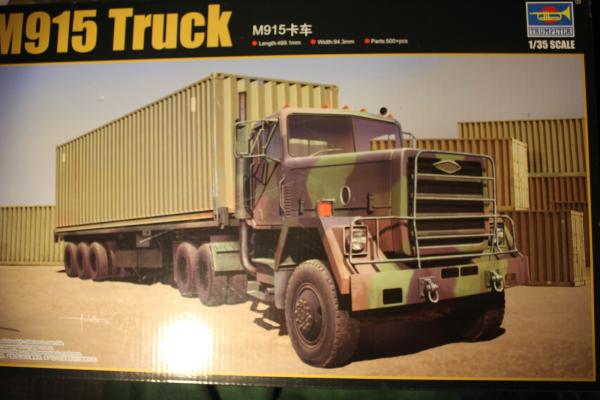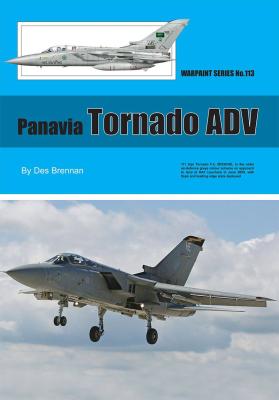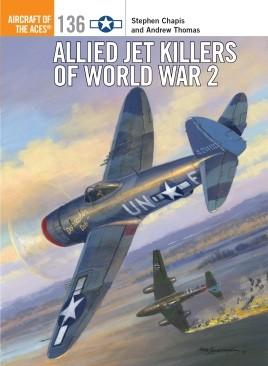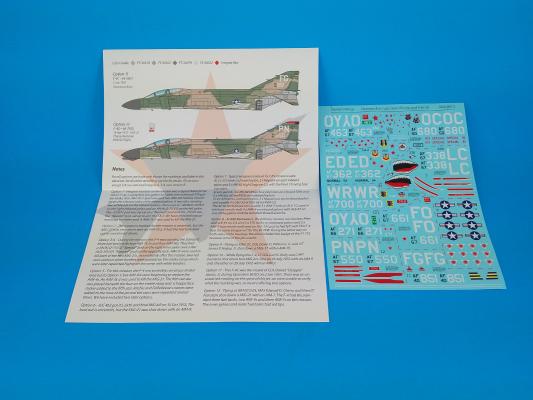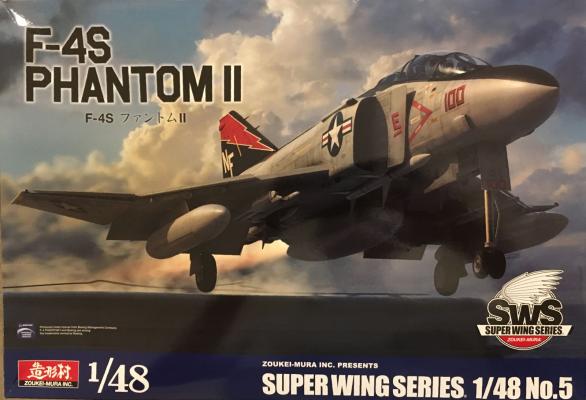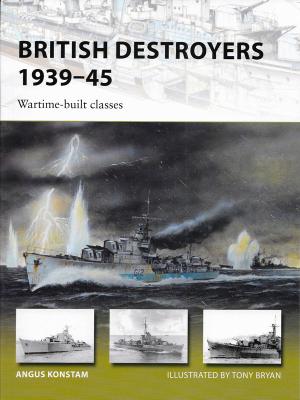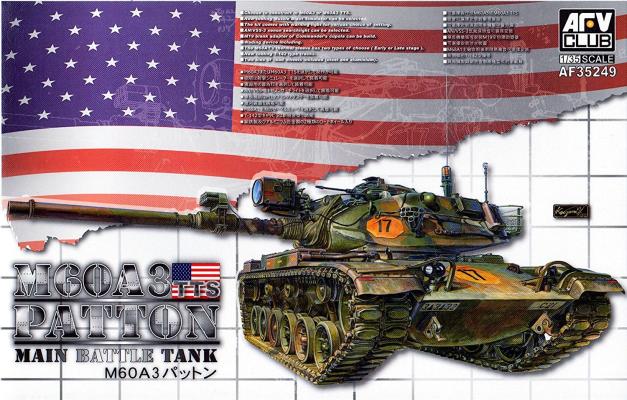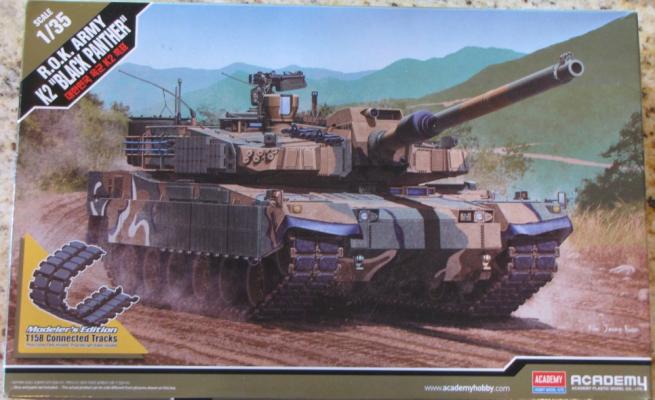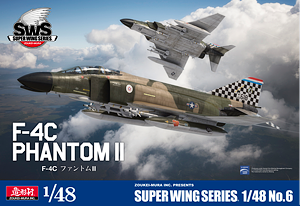The M915 is the basis for a series of heavy trucks built for the US Army. In the late 1970s the US army identified a need for a line of commercial trucks. AM General was selected in 1977 and the first vehicles were delivered in 1978. This new release from Trumpeter depicts the M915 Line Haul Tractor. This vehicle is limited to operating on hard surface roads and typically tows the M872 semi-trailer. This combination has a payload capacity of around 30 tons and this new release from Trumpeter contains the M915 tractor, M872 trailer and a 40ft container.
What's New
Des Brennan provides a thorough coverage of the development, deployment, service, and retirement of the Panavia Tornado ADV in this publication. Illustrated by Richard J. Caruana, this book is an excellent resource for the aviation historian as well as the modeler.
The written content is well written, in clear and precise language. The content is presented in chronological sequence, as most publications of this type are, beginning with a thorough description of the role into which a new aircraft was to fit. The author describes, in detail, the requirements that the aircraft was to meet in order to accomplish its purpose in a theatre of operations with rather complex needs.
The text is supported by a large number of excellent color images and stunning 3-view drawings of the aircraft with varied markings. Richard Caruana, the illustrator, certainly captured the aircraft well in these illustrations.
Osprey Publishing has previously released books on two iconic side arms: The Colt 1911 Pistol and The Webley Service Revolver. What has been missing from the history of pistols, until now, was one weapon that was developed and deployed in the late 1890's, namely the Feederle Pistol from Mauser. Otherwise known as the 'Broomhandle' Mauser.
While this pistol was manufactured and sold by Mauser and is often attributed to them, the design and development was actually done by brothers Fidel, Friedrich, and Josef Feederle. The Feederle brothers worked for Paul Mauser and, in his defense, it was somewhat standard operating procedure for a company to take credit for any design/development work done by the namesakes employees. [Fun Fact: Paul Mauser once forbade Fidel Feederle from working on a pistol design.]
Osprey Publishing, out of Oxford, UK, is back again with another Aircraft of the Aces series entitled Allied Jet Killers of World War 2, by Stephen Chapis and Andrew Thomas. Jim Laurier was commissioned to illustrate the various allied aircraft via original color artwork. Anyone familiar with aircraft modeling literature and research will recognize this authoritative series, and this latest release won’t disappoint.
Allied Jet Killers follows the format of the previous Aircraft of the Aces volumes, containing beautiful (original) color plates and numerous black and white photos with detailed captions, although much of what is contained in the captions is also reflected in the main text.
The photos are credited, and while I’ve seen some of the images before, most are new to me.
Background
The air war in Vietnam was a departure from what the United States had experienced in prior conflicts. The over-dependence on air-to-air missiles, micromanagement of operations from the White House, and countless constraints and rules of engagement put American aircrews at a distinct disadvantage against North Vietnamese adversaries. Despite those limitations, the US forces adapted to circumstances, exercised some good old American ingenuity, and managed to generate several aces and some legendary missions based on unorthodox tactics. A common thread in the making of these aces and employment of these tactics was the F-4 Phantom II.
I am honored and privileged to review a beautiful new scale model offering in the Super Wing Series from Zoukei-Mura, Inc. I also wish to extend a very deep appreciation to the IPMS/USA Reviewer Corps for choosing me to review the F-4S variant of the famous McDonnell Phantom II.
The kit was released on 26 JUL 17, following on the heels of a previous F-4J release in the same scale and series. This review is the second of two sequential reviews, including my adventures in completing the kit build. This final review dovetails with the previous IPMS reviews of the Zoukei-Mura F-4 kits. I am not a subject matter expert (SME) on the F-4x family, but I sure enjoy a well-designed kit and fun build, learning about the real thing as I go. The Zoukei-Mura F-4S does not disappoint!
This is Angus Konstam’s follow-up volume to his earlier work on Pre-war Royal Navy destroyers. As he explains, the real division between “pre-war” and “war-built” destroyers came in 1938, when the new “Tribal” class destroyers came into service. Between the First and Second World War, the Royal Navy operated many destroyers, but by the mid-1930s it was obvious that the Admiralty’s older destroyers were being outclassed by those of foreign navies. Thus, a new series of destroyers was designed to compete directly with potential foreign adversaries, the first being the 8-gunned Tribals, built directly in response to the Japanese Fubiki class. Follow on classes were more balanced designs, with fewer guns and more torpedoes and ASW weapons, and finally, the War Emergency Program classes specialized in simplicity of design for quicker mass production, with lighter surface weapons and more depth charges for escort work.
Background
The M60 series of tanks replaced the M48 as the main combat tank of frontline US armored combat units, first entering production in 1960. Instead of the 90mm main gun of the M48, the M60 introduced a 105mm gun. This was deemed necessary to defeat the latest Soviet T-54/55 tanks that entered service with Warsaw Pact forces in the mid to late 1950’s.
I have heard for the last several years that we live in a golden age of modeling due to the huge array of subjects now hitting the shelves of hobby shops. Academy continues this trend with the release of the Main Battle Tank of the South Korean Army. An indigenous design that is an evolution of the K1. Both vehicles bear a passing resemblance to the American M1 Abrams, though they are smaller. The K2 entered production in 2013 and was fielded in 2014. As you can see by the box art, it has reactive armor, a 120 mm gun, and a host of other defensive features to defeat anti-tank missiles. It has a crew of three. The loader was eliminated with an auto-loading system. It is a welcome addition to the plethora of modern vehicles that have entered the market in the last several years.
The McDonnell Douglas F-4 Phantom II is a tandem two-seat, twin-engine, all-weather, long-range supersonic jet interceptor and fighter-bomber originally developed for the United States Navy by McDonnell Aircraft. It first entered service in 1960 with the U.S. Navy. Proving highly adaptable, it was also adopted by the U.S. Marine Corps and the U.S. Air Force, and by the mid-1960s had become a major part of their air wings.
The Phantom is a large fighter with a top speed of over Mach 2.2. It can carry more than 18,000 pounds (8,400 kg) of weapons on nine external hard-points, including air-to-air missiles, air-to-ground missiles, and various bombs. The F-4, like other interceptors of its time, was designed without an internal cannon. Later models incorporated an M-61 Vulcan rotary cannon. Beginning in 1959, it set 15 world records for in-flight performance, including an absolute speed record, and an absolute altitude record.

